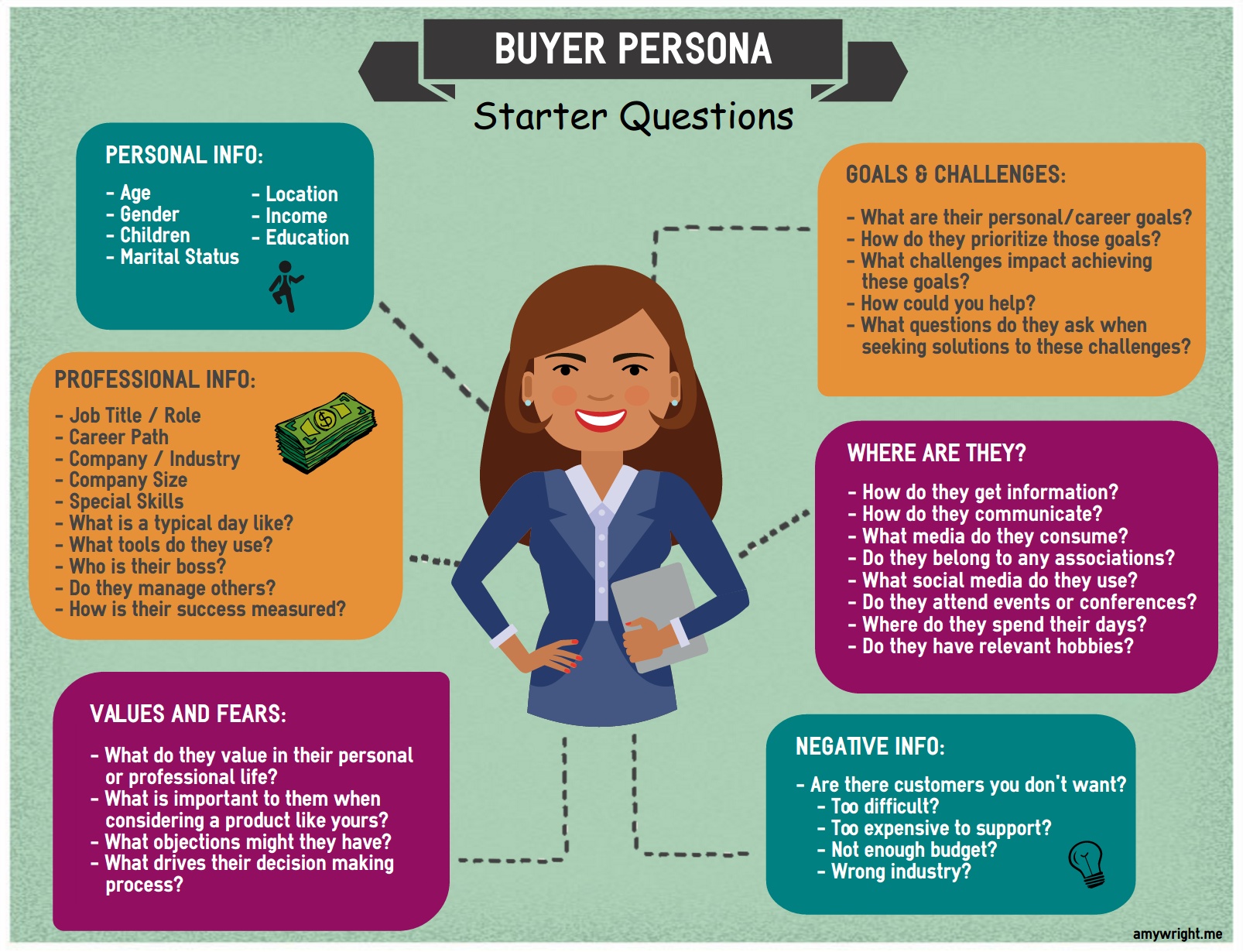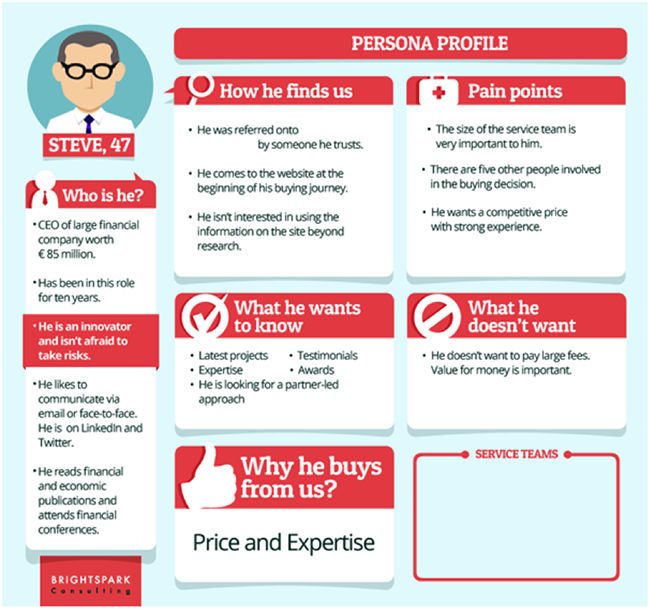December 20, 2020
What is a Buyer Persona and Can Your Business Use One?

As customer expectations continue to rise, it’s critical that you not only understand your audience but know them in segments. The more you work toward getting to know people, the easier it is to sell to them. This starts with a little research, some organization, and defining a buyer persona.

What is a Buyer Persona?
The definition of a buyer persona is a detailed description of someone who represents your target audience.
“Persona” is just a general term for a person that doesn’t exist (but could) and is willing to purchase what you have to offer. This is the ultimate customer and the one you want to target. It is not a real person but a sentiment that embodies the characteristics of your best prospective customers.
A buyer persona is known by many terms, like an audience persona, customer persona, or marketing persona. All roads lead to the same end. What you need is a way to define your average audience member on paper.
Developing a Buyer Persona
There are a lot of details that go into developing a buyer persona. This includes information like:
- Persona name
- Demographic details
- Interests
- Behavioral traits
- Purchasing patterns
Even though this is a fictitious character, you should treat it like a real person. The more you work to understand the buyer persona’s pain points, buying patterns, and goals, the easier it will be to service real people who want the same thing.
You can even give your buyer persona a face using stock photography. If more you work to make it real, the easier it will be to treat it as such. Some companies have gone so far as to put up cardboard cutouts of their buyer personas to create a real presence in the office.

You don’t have to do this, by any means, but it helps you see how far some brands are willing to go to practice sales. It allows you to craft marketing messages that are targeted specifically to them. A buyer persona guides everything from your brand voice to product development and the social channels you use.
Multiple Buyer Personas
Different groups of people will want to buy your product/service for different reasons. You cannot get to know every prospect or customer individually but you CAN create a persona to represent each segment of your customer base.
A business should always have more than one persona. Dynamic marketing is typically targeted and you can’t do that without segmenting your audience and creating multiple buyer personas.
Defining a buyer persona helps you create content that is more interesting to your ideal customer. It’s easy for marketers to get lost in the details of tracking campaigns and analytics. A buyer persona will remind you to put the wants and needs of your audience ahead of your own.
The Best Way to Use Buyer Personas
Once you’ve created a few personas and edited them to perfection, you need to put them to good use. Otherwise, what is the point of creating them? There is a multitude of ways to use buyer personas. Here are a few ideas:
Reframe Your Work from the Buyer’s Perspective
Marketers oftentimes get lost in the corporate-speak and catchy buzzwords that don’t mean much to an outsider. Buyer personas can help you avoid this miscommunication by reminding you to think about the real humans who engage with a brand’s content and read the social posts.

A buyer persona keeps you focused on addressing customer priorities rather than your own. Every time you make a business decision about your social marketing strategy, consider the buyer persona.
Does a new campaign address the needs and goals of at least one buyer persona? If not, then perhaps it’s time to reconsider your plan.
It’s critical to build a social strategy based on helping your personas meet their goals. This will facilitate building a bond with the real people the personas represent. It’s about leveraging sales while establishing brand trust and loyalty.
Target Ads More Effectively
Social advertising offers a lot of opportunities for detailed targeting. Once you have defined buyer personas, you can create ads that speak directly to the audience you have defined. Then, use social ad targeting to get that content in front of the right people.
It’s good practice to create separate ad content for each of your defined buyer groups. This advanced level of segmenting and targeting improves ad campaigns and increases conversion rates.
Connect Your Business Objectives to Your Buyer Personas
A method that involves connecting your business goals with buyer personas is known as the buyer persona spring model. It’s called a “spring” model because it involves three distinctive loops:
- The kinds of content you create and how it speaks to buyers.
- The channels your buyer personas use the most.
- The quality of data that allows you to report on success, monitor efforts, and revise your strategy as needed.
Each of these loops includes four points at which you plan, act, observe, and reflect.
In Conclusion
A buyer persona is not essential for modern marketing but it will definitely put you ahead of the competition. Today’s business is all about meeting customer needs and expectations. Creating multiple buyer personas ensures you are always putting the consumer ahead of your own needs. And they will certainly see the difference!








